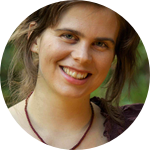Please wait...
About This Project
The human placenta contains a mixture of substances which may be useful for individual postpartum treatment. Until now, scientific research on the use of placenta remedies as a unique and cheap therapeutic treatment for women suffering from pathologies like anemia, depression or lactation difficulties, does not exist. To be able to discuss possible effects of placentophagy, the content of placental tissue has to be tested. The goal of this project is to analyze the hormones and elements from a sample size of 6 placentas to identify the bioactive molecules present.






